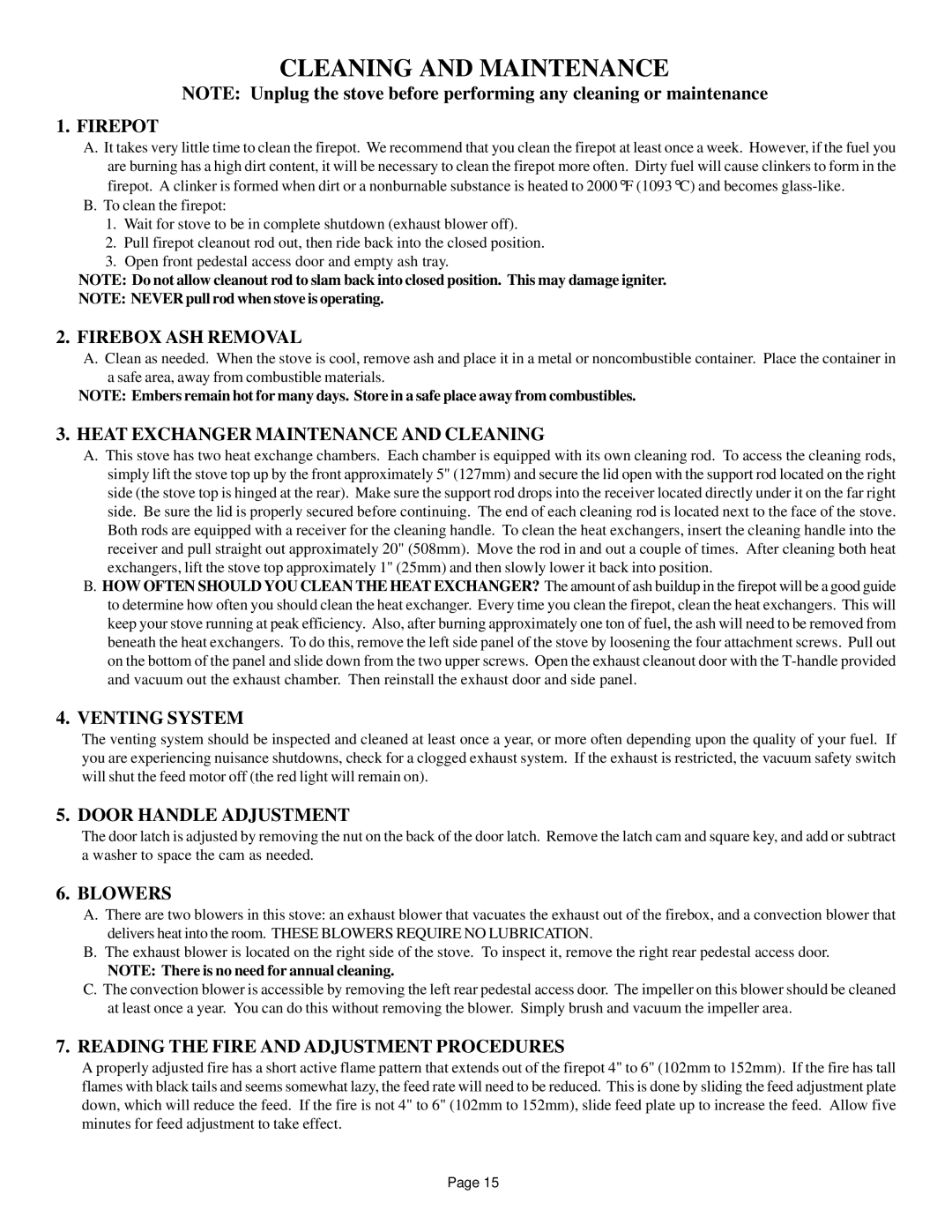800 specifications
Hearth and Home Technologies (HHT) is renowned for its innovation in the fireplace and hearth industry, and one of its standout offerings is the HHT 800 model. Designed for comfort and efficiency, this model seamlessly combines traditional aesthetics with cutting-edge technology to enhance both ambiance and functionality in any living space.One of the main features of the HHT 800 is its powerful heating capabilities. This model is engineered to provide substantial heat output, making it suitable for medium to large rooms. The HHT 800 boasts an impressive thermal efficiency rating, which allows it to convert more fuel into usable heat while minimizing waste. This efficiency not only reduces heating costs but also contributes to a more sustainable heating solution.
The HHT 800 is equipped with advanced combustion technology, including a clean-burning system. This feature is crucial for maintaining indoor air quality, as it significantly reduces emissions and particulate matter released into the atmosphere. Homeowners can enjoy the beauty of a roaring fire without the guilt of contributing to air pollution.
Another defining characteristic of the HHT 800 is its user-friendly interface. The model includes a straightforward control system, allowing users to easily adjust the flame height and heat output to suit their preferences. This level of customization enhances the overall experience and makes the fireplace adaptable for various occasions, whether it's a cozy family gathering or a romantic evening.
The aesthetic design of the HHT 800 also sets it apart. Available in a variety of styles and finishes, it can complement any home decor, from contemporary to traditional. The glass front allows for a clear view of the mesmerizing flames, enhancing the visual appeal.
Safety features are another highlight of the HHT 800. It incorporates advanced safety mechanisms such as a safety shut-off system and a secure glass door, ensuring that users can enjoy their fireplace without worry. Additionally, the model is designed for easy installation, making it a practical choice for both new constructions and remodels.
In conclusion, Hearth and Home Technologies’ HHT 800 model is an exceptional fireplace that combines efficiency, technology, and style. With its innovative heating capabilities, advanced combustion system, user-friendly controls, and elegant design, the HHT 800 not only serves as a source of heat but also as a stunning centerpiece for any home. This model reflects HHT's commitment to quality and innovation in the hearth industry, providing consumers with a reliable, safe, and aesthetically pleasing option for home heating.
